Slim Fit, a 50 square meters micro-house
Here comes Slim Fit, a 50 square meters micro vertical house designed by Portuguese architect Ana Rocha, whose studio is based in La Haye. The…
Some people may claim it certainly is, others may put it into perspective or may state that it depends on the project, background and time period. Therefore, whether architecture is an art is often controversial.
If we stick to the definition of art as “an aesthetic ideal expressed by human creations”, then architecture perfectly fits in it. However, the definition of architecture itself is more complex: for example, does it aim to organise spaces or to create a beautiful object? There is no answer to this question.
According to Jay A. Pritzker and his wife, founders of the architectural prize of the same name, “architecture will go beyond the human need to seek a safe shelter and will become an artistic expression”. Well-known Guardian art reporter Jonathan Jones, the judge for the 2009 Turner Prize, claims that “architecture belongs to our daily, familiar life, but as it is mainly considered as functional and necessary, it is difficult to understand where art begins when you are inside a building”.
It is because of this ambiguity that the architectural field is so difficult to classify but also so fascinating. In order to focus on this issue, we have chosen several architectural works that can be respectively considered art, pure architecture, or a mix of both.
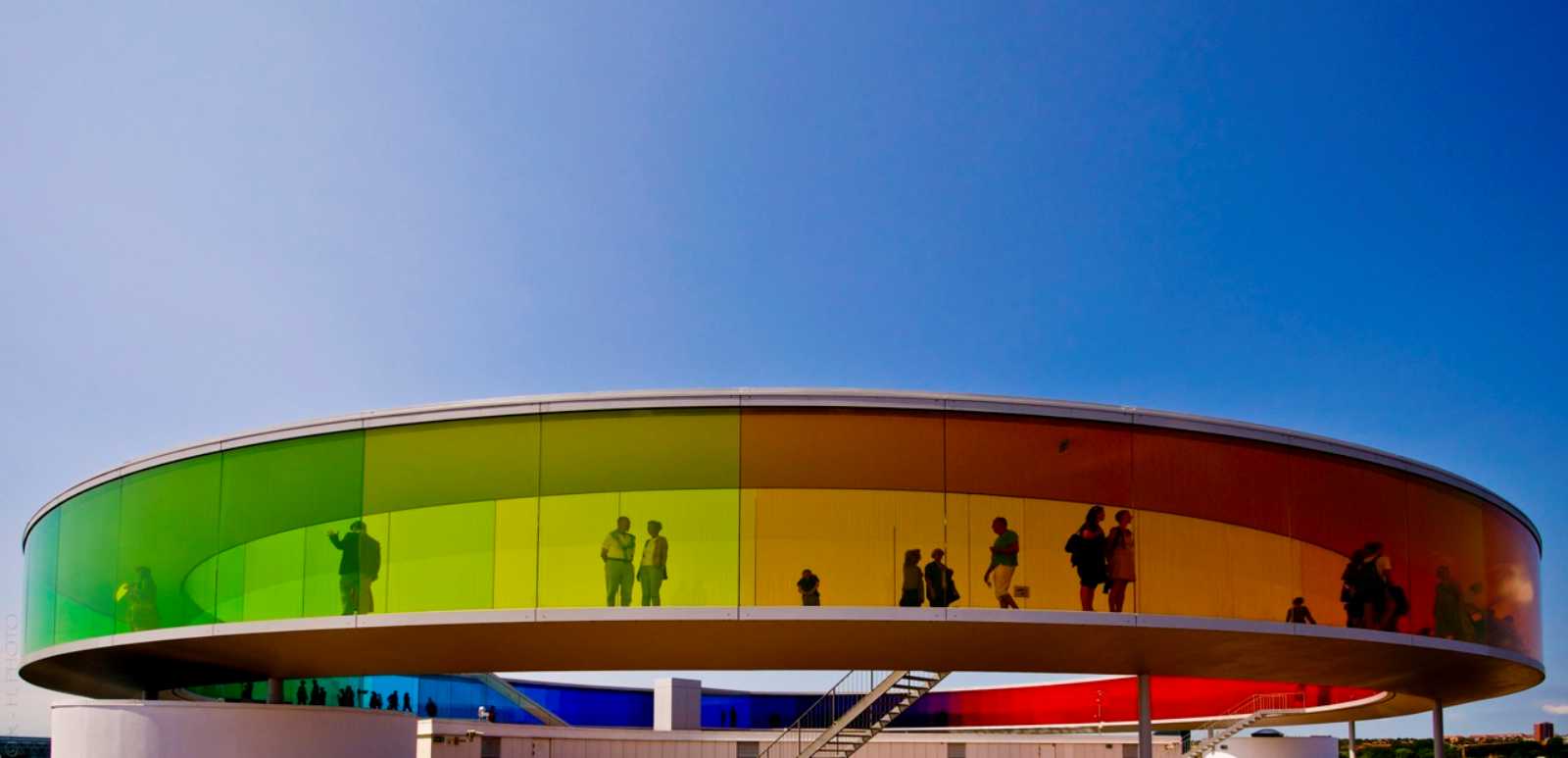
Built on the top of the ARoS Aarhus Art Museum, Denmark, Your Rainbow Panorama is a permanent installation that soon after its opening has become an iconic landmark.
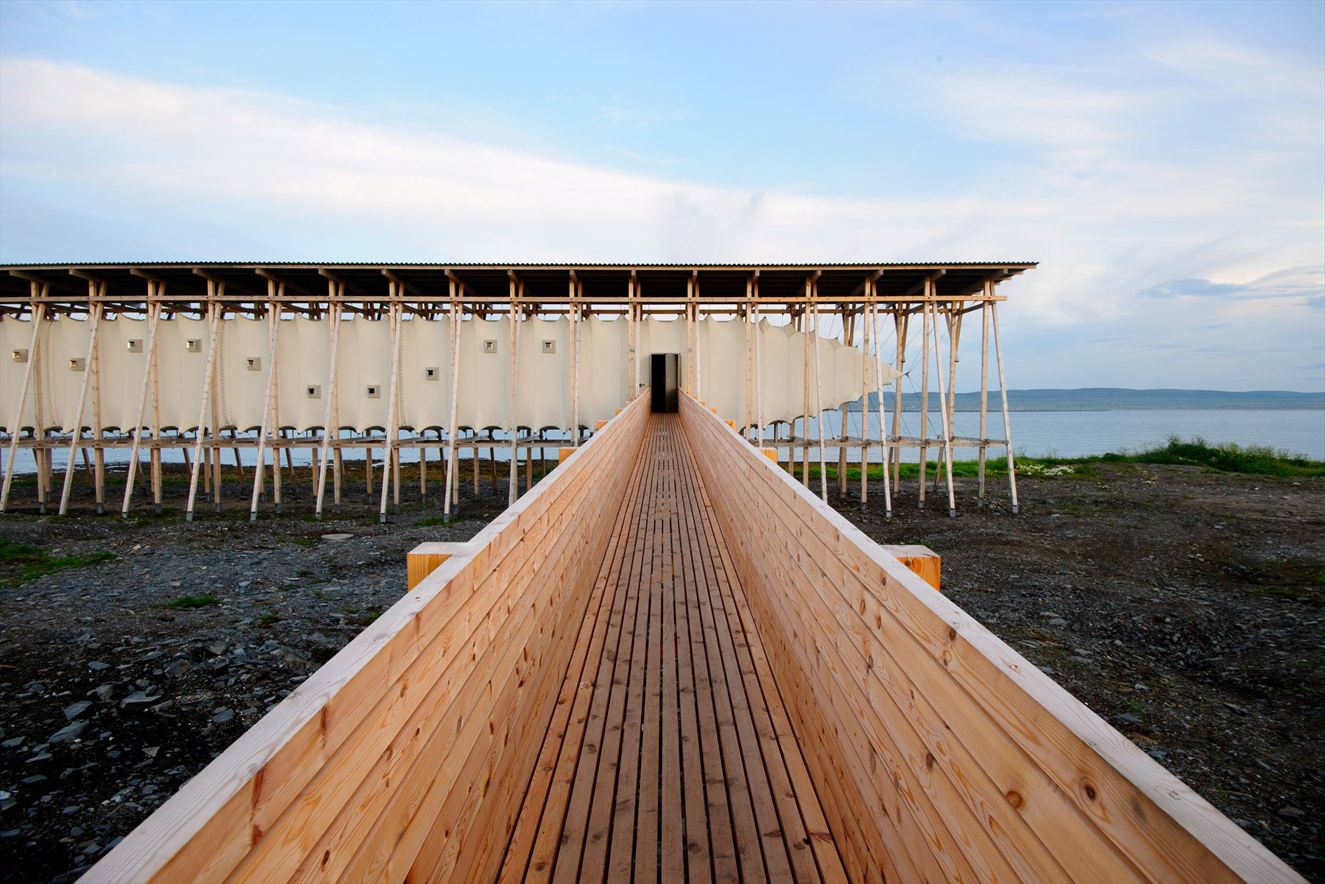
This unique memorial, built in Vardø, Norway, pays tribute to those persecuted in the seventeenth-century Witchcraft Trials. A suspended silk cocoon along the coast is immersed in a dreamlike stone landscape that adds a dramatic touch to the overall effect.
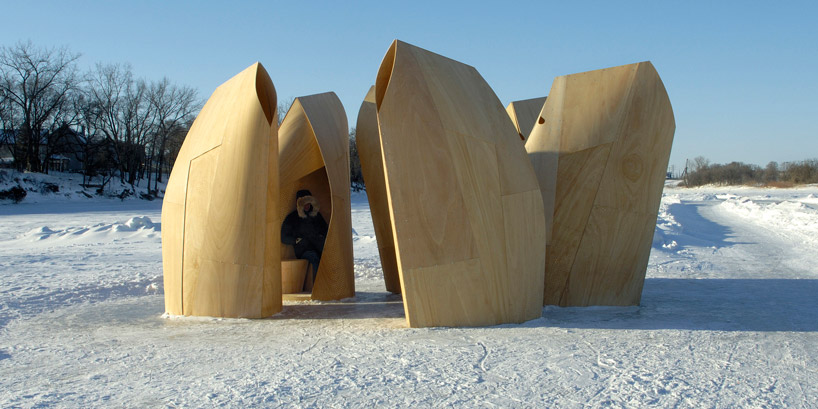
These plywood structures built in Winnipeg, Canada, serve as a shelter against the sun and wind.
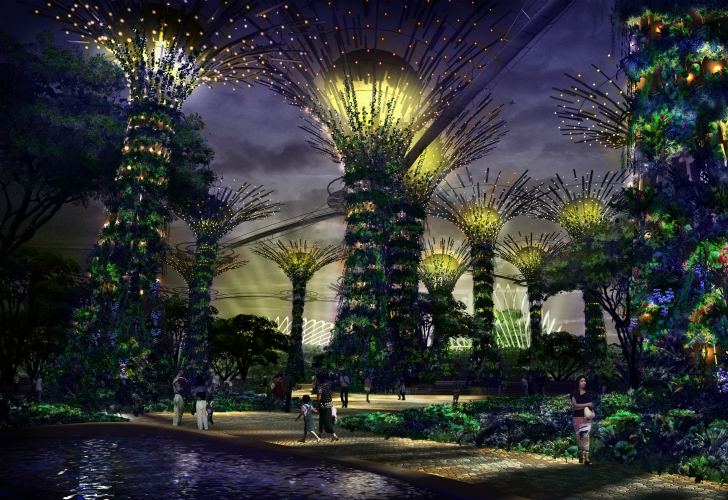
Between 25 and 50 meters in height, these vertical gardens come alive with colourful lighting at night. They offer a unique experience to visitors, who are free to “hike” between the giant trees and explore each of them. Their concrete and metal structure houses a thousand tropical plants and produces electricity thanks to solar panels.
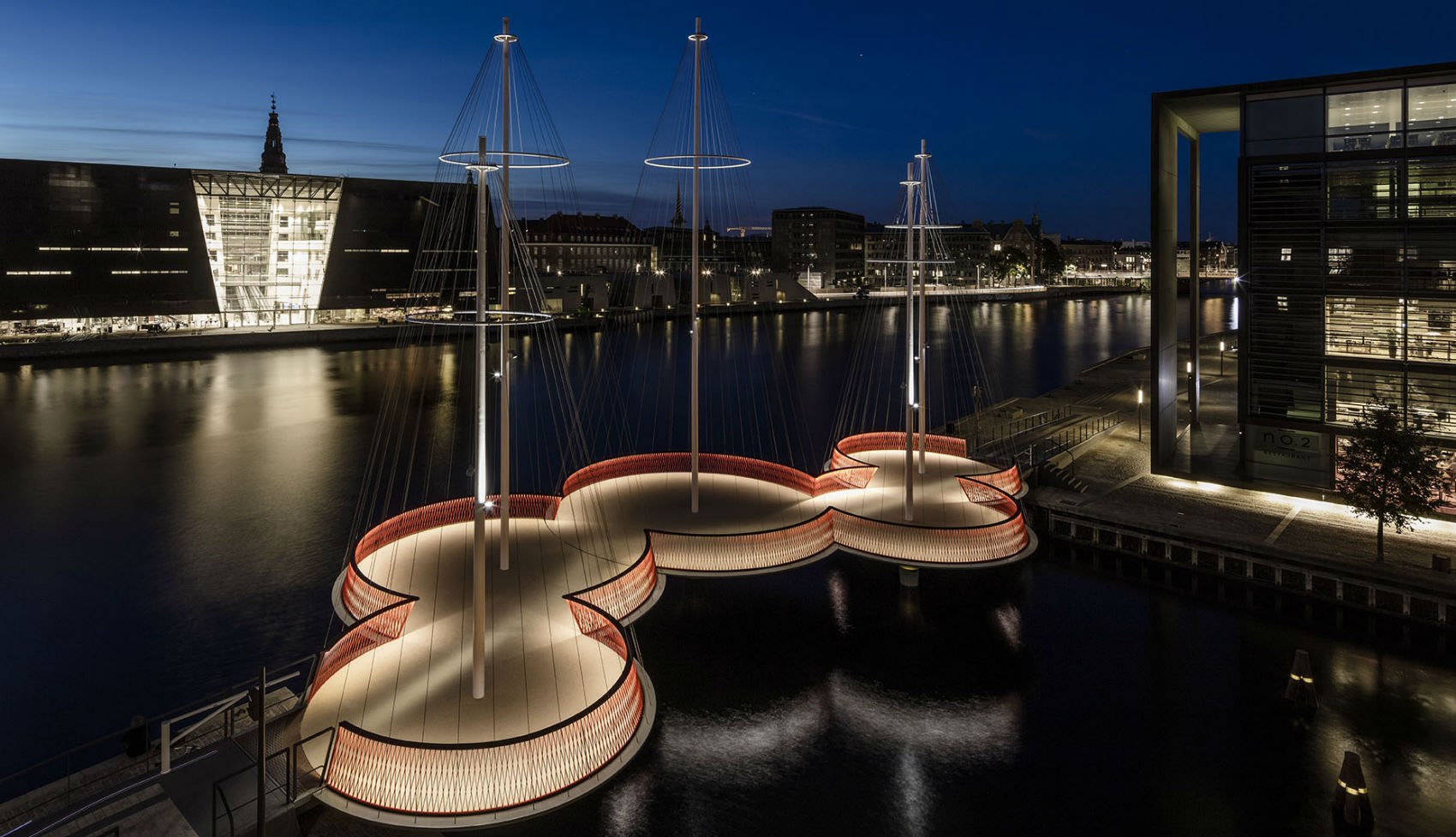
This time Studio Olafur Eliasson wins fame thanks to a bridge that pays tribute to all the ships anchored in the Copenhagen harbour during its history. Cirkelbroen is a pedestrian bridge built with the aim of slowing down the walking rhythm and encouraging social interaction and friendliness.
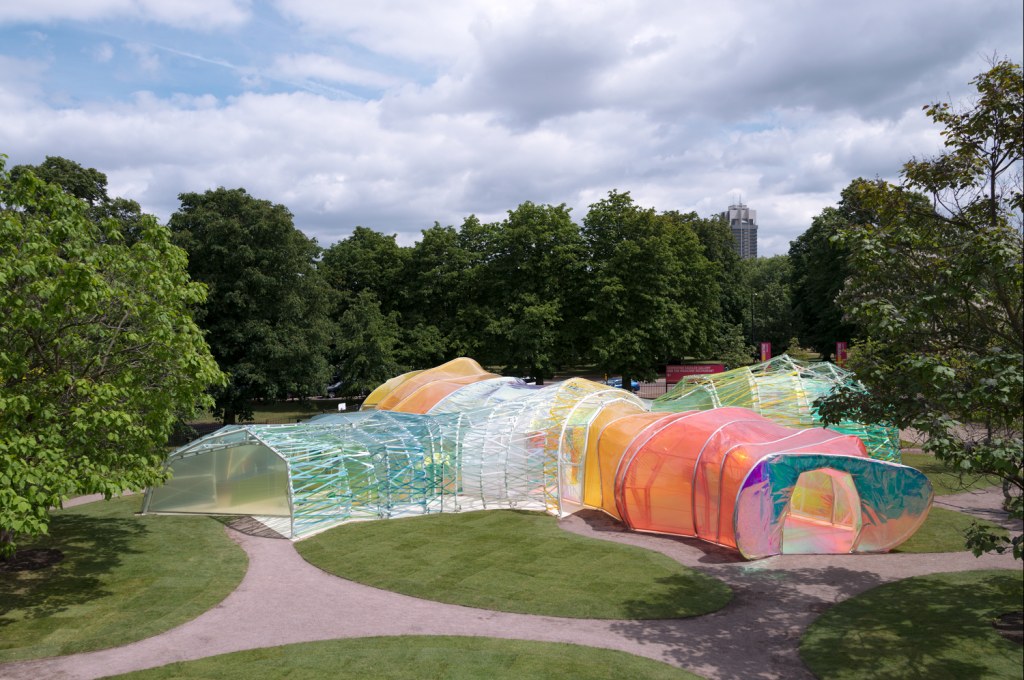
Built by wrapping shiny plastic panels to a minimalist steel frame, this pavilion reproduces the spatial variety of London’s subway.
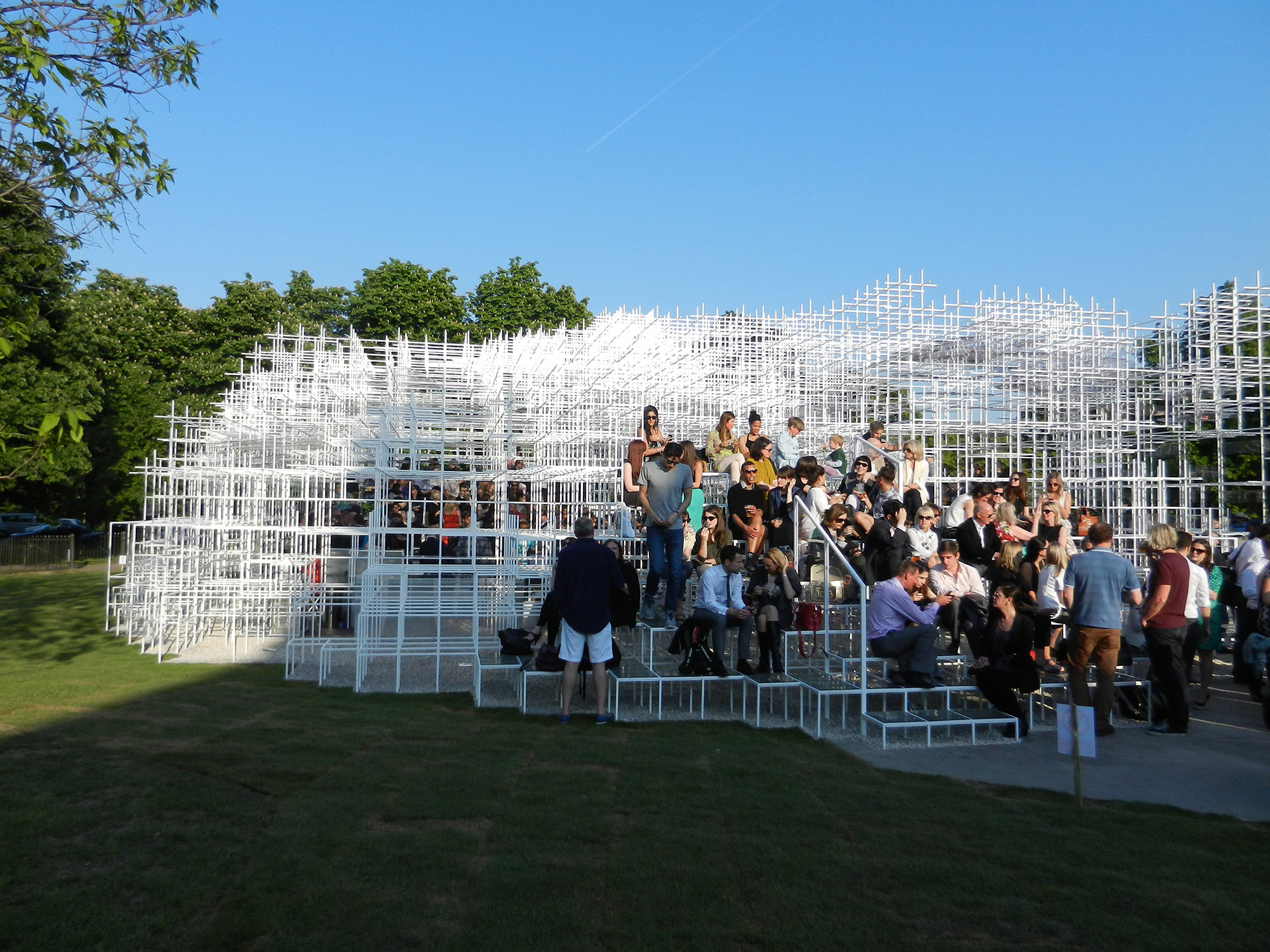
Built in Hyde Park, London, this pavilion designed by the Japanese architect is a translucent three-dimensional steel grid. Visitors are free to walk through it, on it or under it.
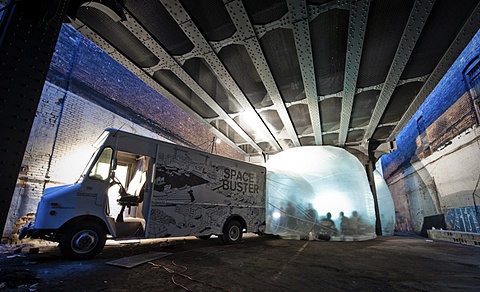
Aiming at transforming public spaces in Berlin, Raumlabor installed some inflatable plastic shells in order to highlight the social potential of those areas and convert them into social interaction spaces.
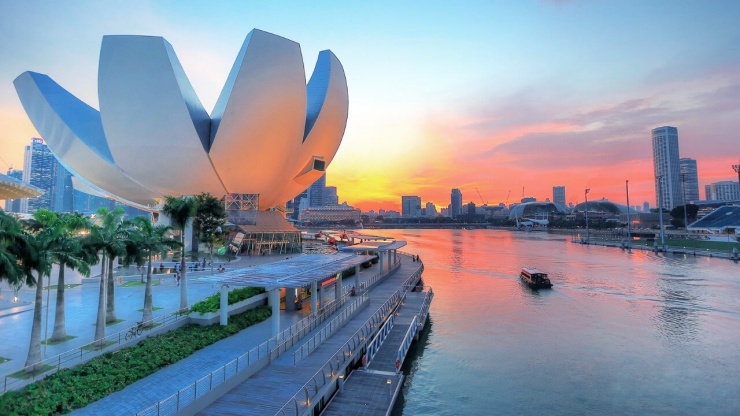
This museum in Singapore looks like a giant lily rising from Marina Bay. Its 10 large petals can collect rainwater and drain it in a single place.
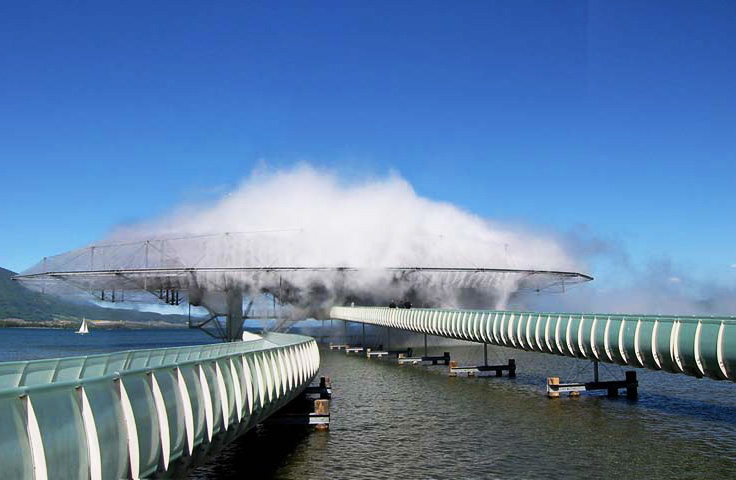
The Blur Building is an exposition pavilion built at the base of Lake Neuchatel in Switzerland. A cloud of artificial fog shapes it according to the wind direction, hiding or revealing different views that influence visiting paths inside the building.

This over 75 meters high steel arch will be completed in 2017 and will be placed in front of the Sydney City Hall. It is expected to become one of Sydney’s landmarks along with the Opera House.
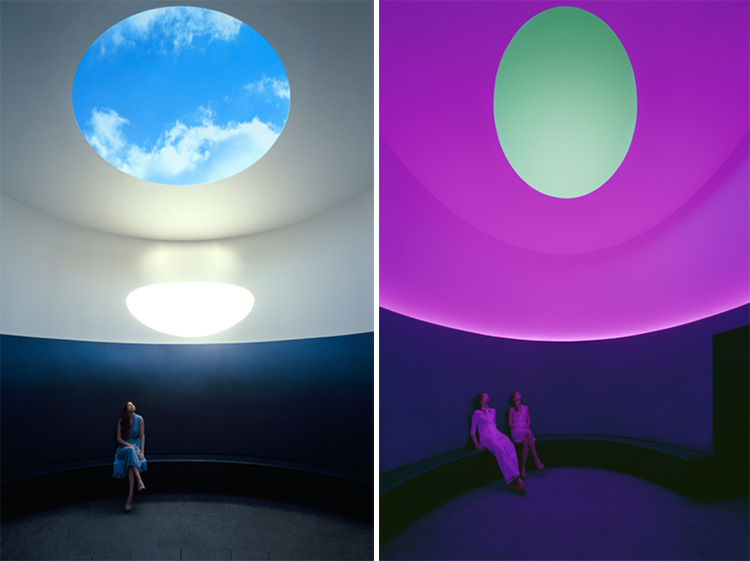
Located in a small minimalist building in Austin, Texas, this work allows visitors to see the sky through a hole in the ceiling. Some lights illuminate the ceiling area surrounding the hole with a sequence of changing colours that transform the sky experience.
In conclusion, this series of architectural masterworks shows that the boundary between architecture and art is quite blurred. Maybe we should not label things: as long as we can appreciate what we see and it stirs our emotions, it means that architecture and the architect fulfil their role.